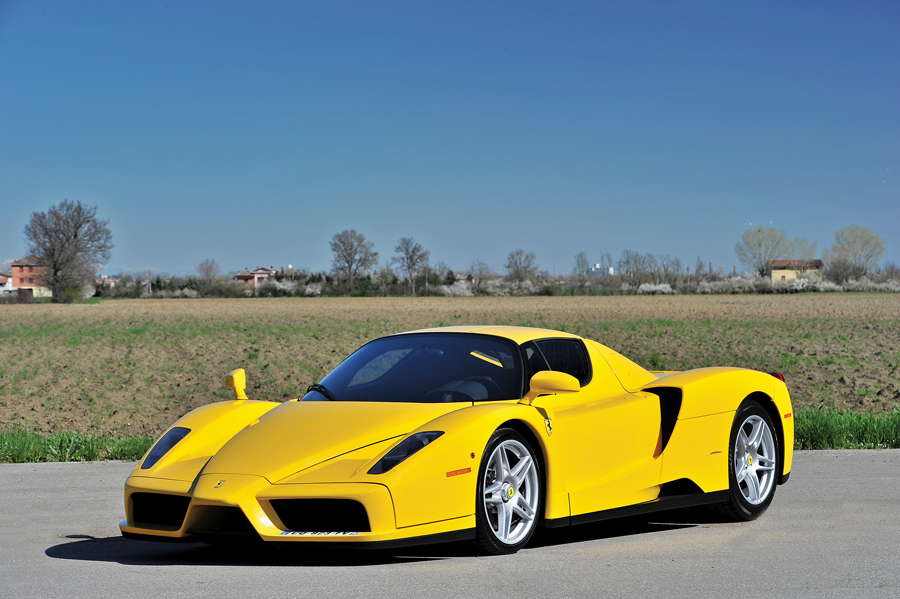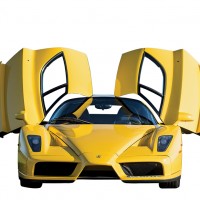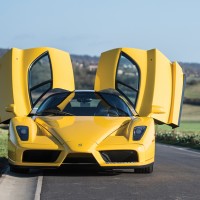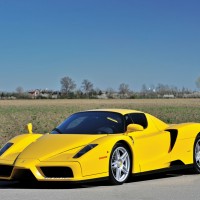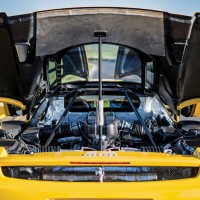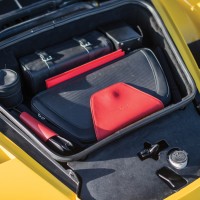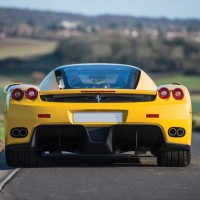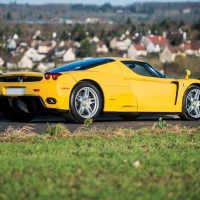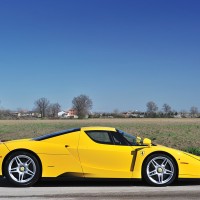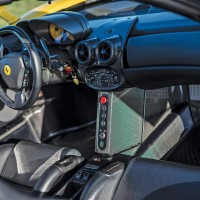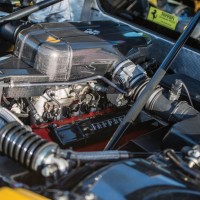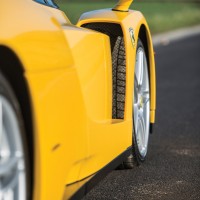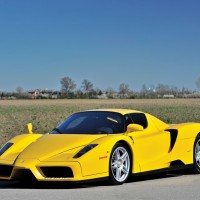SCM Analysis
Detailing
| Vehicle: | 2002 Ferrari Enzo |
| Years Produced: | 2003–05 |
| Number Produced: | 400 |
| Original List Price: | $643,330 |
| SCM Valuation: | $1,250,000–$1,900,000 |
| Tune Up Cost: | Starts at $3,000 and can go up dramatically |
| Chassis Number Location: | Interior dash near windshield |
| Engine Number Location: | In V between heads |
| Club Info: | Ferrari Club of America, Ferrari Owners Club |
| Website: | http://www.ferrariclubofamerica.org/ |
| Alternatives: | 2006 Bugatti Veyron, 1991–98 McLaren F1, 1987–88 Porsche 959 |
| Investment Grade: | B |
This car, Lot 107, sold for $1,411,200, including buyer’s premium, at RM Sotheby’s Villa Erba auction in Cernobbio, Italy, on May 23, 2015.
The team behind the Ferrari Enzo faced a real challenge. They had to best the F50 and defend an onslaught from Lamborghini, Porsche, and the specialty manufacturers. Sheer horsepower wasn’t going to make the Enzo special. The team needed something else to make the Enzo a worthy successor to the throne.
A beautiful body
The F50’s development was done at a time when mechanical design and construction techniques were already quite advanced. Composite components, push-pull suspension and sophisticated engine management were standard supercar fare. Even with the help of Ferrari’s Formula One engineers, there would be few breakthroughs to showcase on the Enzo.
Any performance improvements would be incremental and mostly accomplished with lighter-weight construction rather than whiz-bang technology. The Enzo would be an impressive performer but only modestly newsworthy. The breakthrough that made the Enzo a hit would come from an unlikely source: a young designer who would create a body that challenged Ferrari convention.
On April 26, 2002, some five months before the Ferrari Enzo would be shown to the public, a life-size mock-up was unveiled at the Museum of Contemporary Art Tokyo. The mock-up was part of an exhibition titled “Ferrari and Maserati Artedinamica.” The mock-up was called the Ferrari FX at the time, and it shared space with drawings of a concept Maserati Quattroporte — along with assorted Ferrari/Maserati design material. The fact that Ferrari was previewing the Enzo in Japan was not incidental.
A life in design
Growing up in Japan, Ken Okuyama could have had no idea that he would be responsible for one of the most important projects to come out of the world’s top automotive design house. Okuyama was an ambitious youth who did everything he could to make his own luck. He knew talent alone would not get him to the top of the industrial-design world, so he learned several languages and studied at the world’s best design schools. His career path included designing the Acura NSX, a stint at GM under Chuck Jordan, and through a chance meeting with Sergio Pininfarina, the opportunity to design a new Ferrari supercar.
Designing Ferrari’s newest supercars ranks among the most important positions in the design world. The project is not just important because the client is Ferrari — it is important because the car will receive more exposure than any car on the planet. A new Ferrari supercar will make the cover of most every automobile publication in the world. The proliferation of automobile websites, automobile-themed television shows and automobile chat sites ampliflied everything in the press to an unprecedented level. The fate of the Enzo was cast before the first car was delivered.
Ferraris are always a form-follows-function proposition, and the influence of a wind tunnel is in evidence in both the design and the aerodynamic numbers of the Enzo. It is the designer who must make the technical necessities aesthetically pleasing, and Okuyama broke the mold. The Enzo’s sharp lines are a major departure from Pininfarina’s normally understated compound curves, and while polarizing, the design made the car a hit.
The Japaneese designer shook up the Italian design world. He got people talking and brought miles of free press to Ferrari and Pininfarina. By all measures, the Enzo was a success.
From Pininfarina’s Paris stand
Our subject car was the exact car shown on Pininfarina’s stand at the Paris introduction. The owner certainly enjoyed the car, as it shows nearly 15,000 miles on the clock. It has been well maintained and looks quite striking in its yellow livery. It was offered complete with books, tools, optional luggage and Ferrari Classiche certification.
This car brought a less-than-market price, but that wasn’t unexpected. Million-dollar buyers are understandably picky. It takes low-mileage virgins to pull top dollar, and this car was in a different class. However, on June 26, 2015, Bonhams sold an Enzo famously damaged and accompanied by a rebuilt title for $1,300,000, confirming this car was well bought.
At the other end of the spectrum, RM Sotheby’s will offer the Pope John Paul II Enzo at Monterey in August. No estimate is available at this time, but I won’t be surprised if it’s double this result. ♦
(Introductory description courtesy of RM Sotheby’s.)
